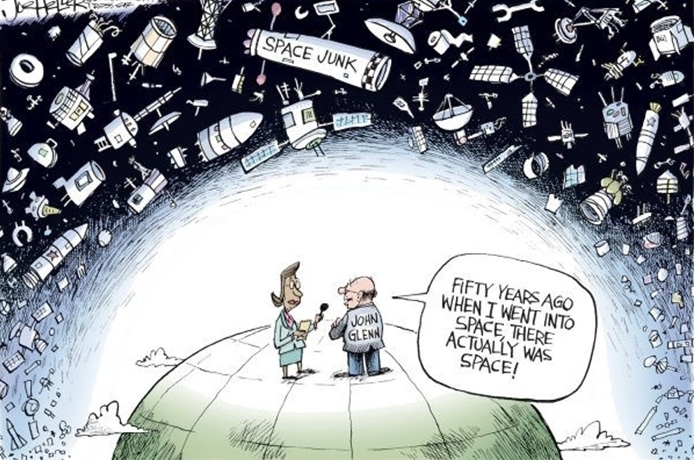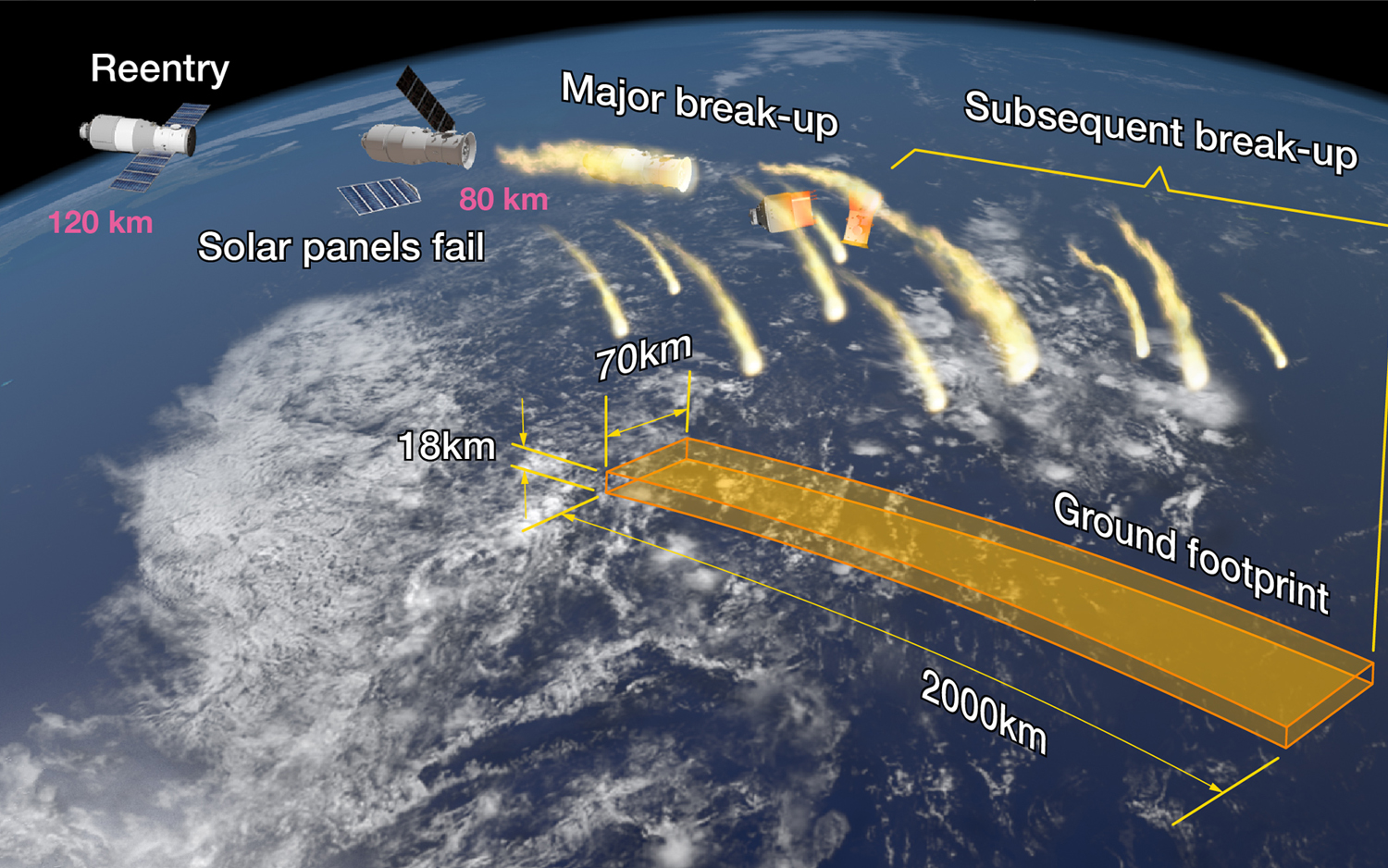
We typically think of pollution as a terrestrial issue that’s only present on the surface of Earth or in the bottom of oceans. However, pollution has been reaching new heights and has found a way to affect us even in the upper pieces of our atmosphere. The Exosphere which is where most of our satellites orbit has become significantly more “dirty” within the last few decades. Since the 1940s scientists have been sending satellites and rockets into space without a definitive way or reason to bring them back to Earth, only recently has space equipment been able to be reused after SpaceX developed the technology. For decades our upper atmosphere was seen as too big for us to ever worry about it becoming too occupied, but as more and more space debris accumulates a problem has begun to emerge.

The photo above reveals the locations of every piece of space debris large enough to reliably track, but the photo fails to show any smaller pieces of debris which number in the 100 of thousands. In space, debris flies at such velocity that even junk the size of a fleck of paint could destroy a satellite. There have been instances where this has occurred which leads to even more junk and accidents as a result. Space debris not only poses a threat to current equipment in space, but future projects as well. As the atmosphere becomes more polluted the debris could harm launches and prevent us from safely reaching the outer edges of our planet, essentially trapping us in our own planet. We always imagine a future where we’ve colonized the whole solar system, but we may face a reality where our species is confined to only Earth.
The debris could also cause direct problems for humans on Earth as well. The orbits of this debris is hard to predict and leads to accidents that have major repercussions. Recently a Chinese satellite had incorrect predictions in where the satellite booster would orbit, they assumed the booster would either fall directly into the ocean or stay in orbit. Instead the booster wildly orbited out of control and began falling towards Earth. We had no idea where the booster (which was 10 stories tall) would land. It eventually fell into the Pacific Ocean but if it were to make contact with land there would have been devastating consequences.

Now that this problem has been acknowledged by NASA and other agencies, they’re working to slow the increase of debris and even capture debris. Technology currently being tested has software which can slowly de-orbit debris into oceans where it can be collected, and the reusable rockets now in commission will slow the increase. There have also been nets proposed which could catch debris and collect the resources, or satellites that can attach to other satellites and help to also de-orbit them. In my opinion this issue is almost more pressing than pollution on Earth in some ways. Without the ability to leave our planet, our species will be confined to only our surface which could lead to greater issues with the passing of time.
